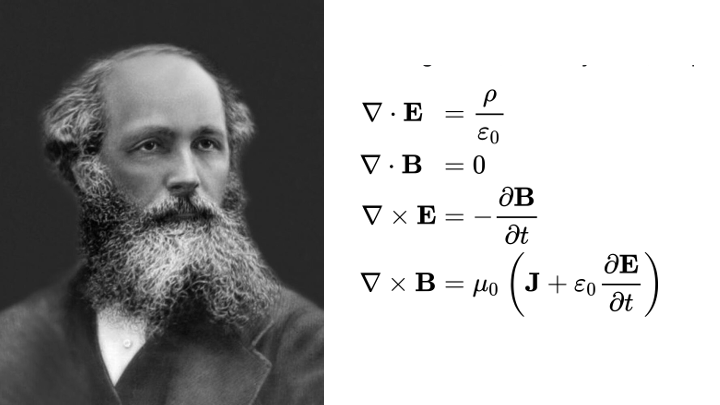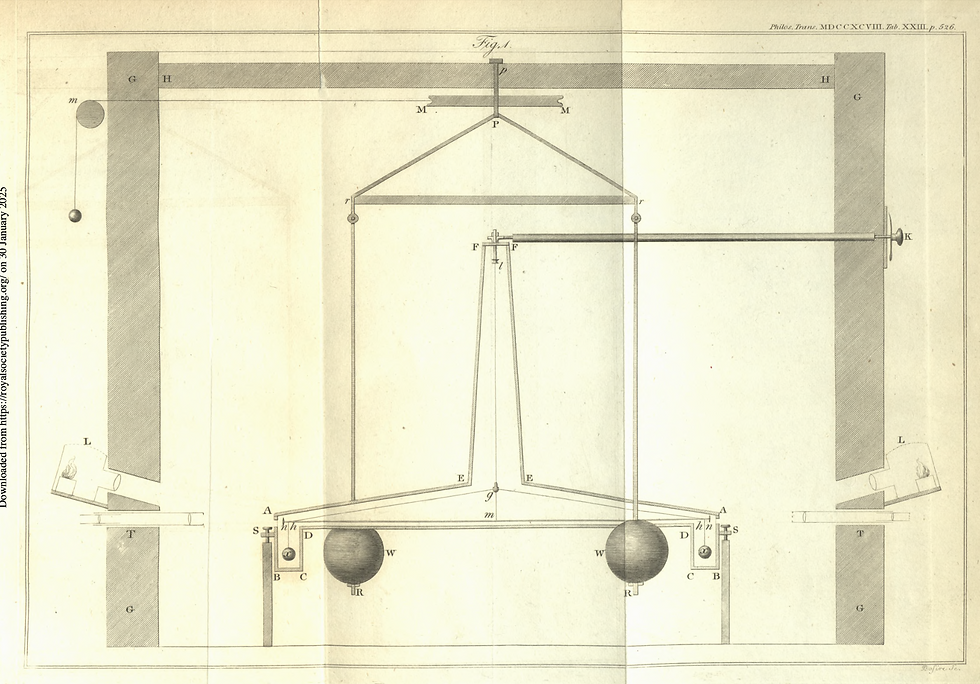The scientific method
- brianaull
- Aug 5
- 4 min read
Updated: Aug 14

Science is often taught as a body of knowedge. But science is primarily a process for discovering and refining knowledge, and for weeding out ideas that don't work. A body of knowedge is created, but it's not static. It changes as we learn new things. This process is sometimes called the scientific method. Here are nine characteristics of the method.
Models
Science creates models that make quantitative predictions about what we will observe or measure in experiments. Models are usually expressed as equations. A great example is Maxwell's equations, published in 1865 by James Clerk Maxwell (1831-1879). He is widely considered to be the greatest physicist of the 19th century.

Maxwell's equations describe how electric and magnetic fields are produced. The model explained experiments already done by Michael Faraday (1791-1867) and others. It predicted radio waves that travel at the speed of light. It is the foundation of many modern technologies, such as radar and optical fibers.
2. Models are testable
In order for a model to be scientific, it must be testable: one should be able do a specific experiment that could falsify the model. This is how science weeds out unworkable ideas.

Take the apparent motion of Venus in the sky relative to the sun. Venus never gets any farther from the sun than about 47 degrees. Depending on where Venus is in its cycle, we see it just before sunrise (the Morning Star) or just after sunset (the Evening Star). Ptolemy's Earth-centered solar system model (left above) explains this by putting Venus between the Earth and the sun and moving around its own little circle. The Ptolemaic model predicts that we should never see Venus fully illuminated, like a full moon, because at least some of its dark side always faces us. Galileo's telescope observations of Venus falsified the Ptolemaic model. As Venus drew near to the sun, he observed it approaching a full Venus phase. This is consistent with the modern sun-centered Copernican model (right).

3. Far better than the naked eye
Modern science uses technologies that extend the reach of the human senses.

There are many things that our eyes can't see because they are too fast, too slow, too distant, too small, or at wavelengths where our eyes are not sensitive. So, we extend our senses with technologies such as telescopes, microscopes, fast electronic measuring instruments, and infrared cameras. The above picture of a nanocrystal was taken with an electron microscope, and you can make out the atoms of copper and tellurium. The black scale bar in the corner is a distance of 2 billionths of a meter, about 37,500 times smaller than the thickness of a human hair.
4. Play devil's advocate with your own data
Scientific instruments have limited precision and experiments can introduce errors. A good scientist tries to "shoot down" his own work. He asks questions. "How could these errors be fooling me?" "Could image distortion from my camera be leading me to the wrong conclusion?" "Is that a real radar pulse coming back or just a spike from electronic noise?"

I previously posted on the Cavendish experiment in 1798-99 to measure the gravitational attraction of balls suspended side by side. Shown above is his drawing of part of his apparatus. Cavendish played devil's advocate with his own data. He repeated the experiment at least 17 times, introducing variations to make sure that he wasn't being fooled by factors such as magnetic effects, air currents from temperature differences, and mechanical fatigue.
Don't put all your eggs in one basket
Science builds confidence in a model when multiple types of evidence tell a coherent story. We are certain that the Earth is nearly spherical in shape and that it rotates. We know this from observations of stars, wind circulation patterns, tidal circulations of oceans, distances between locations, trends in the lengths of noonday shadows, and patterns of seismic activity spreading from an earthquake.
A good model can explain a wide variety of phenomena
Newton's Laws gave birth to huge scientific advances. They predict the trajectories of both a golf ball and a planet with the same simple equations We can confidently discard the Ptolemaic model of the solar system with planets following complicated and unexplained loopty loop paths.
"Just a theory"
In everyday speech a "theory" is merely somebody's speculative idea. In science, it has a very different meaning. It's a model or set of models that has survived rigorous experimental challenges. We refer to Newton's law of gravity as a theory because it works for most situations.
New theories sometimes extend the reach of older ones
So why did I just say "most situations?" Sometimes a theory needs refinement in order to work for extreme conditions. For example, in the very intense gravitational fields close to the sun, Newton's theory is off a little bit. In 1859, it was reported that the actual orbit of Mercury deviates from a Newtonian trajectory. In 1915, Albert Einstein came out with a new theory of gravity, known as General Relativity, which predicts these deviations. But that doesn't mean we discard Newton's theory; we still use it as a very good approximation under most circumstances.

9. How is mathematics like an olympic figure skater?
Answer: it combines elegant beauty with extraordinary power. First, there's the power. Math is both the tool and the language of science. Scientific models are expressed as equations, both to convey their ideas precisely and to make quantitative predictions. Math is needed to do error analysis to find out how much uncertainty is introduced by measurement errors. Math is needed to analyze experimental data to see if it reveals a trend. It is also applied to using scientific knowledge to create and design new technologies.
Second, there's the beauty. This is not necessary for a model to be valid, but often the great scientific advances have math that displays elegance and symmetry. For example, here's an animation showing how the early pioneers of quantum mechanics envisioned the electron going around the nucleus of an atom as an undulating wave rather than an orbiting particle.



Comments